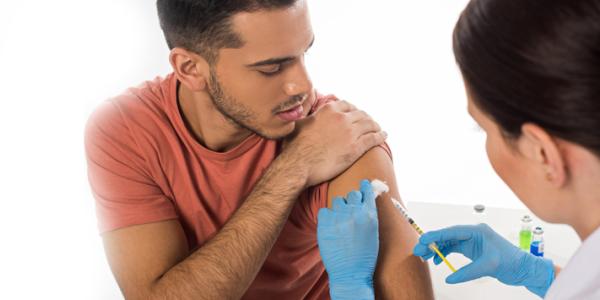
HPV — in its many forms — is the most common sexually transmitted infection (STI) in the United States. Keep reading to learn how to avoid HPV and the health problems associated with it.
Human Papillomavirus (HPV) is the most common sexually transmitted infection (STI). In 2018, roughly 79 million Americans were currently infected with HPV — the bulk of which are in their late teens and early 20s. Common misconceptions deem this infection to be somewhat harmless. And while that may be true for dormant cases of HPV, this infection is the leading cause of cervical cancer in the world.
You may be wondering what the difference between an STD and an STI is. The short answer is that an STI is only considered a disease when it causes symptoms. Think of an infection as the first step on the road to disease. Infections have yet to turn into diseases and they often never do. When it comes to HPV, this is an important distinction.
HPV cases that do not cause significant health problems or develop into something greater are considered to be STIs. If the HPV infection develops into genital warts or cervical cancer, however, it's considered a sexually transmitted disease (STD) and requires varying degrees of care.
Skip
Low-risk HPV strains
The two most common types of low-risk HPV are HPV 6 and HPV 11. These two strains are linked to approximately 90 percent of genital warts. If you contract HPV 6 or HPV 11, your doctor can prescribe topical medications that destroy genital wart tissue. This medication not only removes wart tissue, but it also helps enhance your immune system’s ability to fight the STI.
High-risk HPV strains
High-risk strains include HPV 16 and HPV 18, which cause roughly 70% of cervical cancer cases in the United States alone. HPV 16 and HPV 18 don't typically result in any noticeable symptoms, but both can bring about cervical changes that lead to a majority of cervical cancer cases across the world. Because of the silent nature of high-risk HPV, it's essential to get regular Papanicolaou testing — more commonly known as 'Pap smears.'
Reducing the spread of HPV
HPV is known as the silent intruder because so many cases go unreported and unnoticed. With high-risk strains causing most of the cervical cancer cases worldwide, it's become a silent epidemic. Fortunately, HPV vaccines have been providing nearly 100% protection from nine major strains of HPV since 2006. The problem? Lack of public awareness and understanding has cast a shadow on this highly preventable disease.
By improving public understanding of HPV, more people will get vaccinated to protect themselves and their sexual partners from contracting this potentially deadly disease. HPV vaccination is recommended for routine vaccination at age 11 or 12 years of age, but can be started as early as age 9. The Advisory Committee on Immunization Practices (ACIP) recommends HPV vaccination for everyone through the age of 26 if not adequately vaccinated when younger.
It's essential that parents get their children vaccinated against HPV before they become sexually active. If you have a child or grandchild between the ages of 9 and 26, now's the time to protect them from HPV. Talk to your child's pediatrician about getting vaccinated today.
This article first appeared in the April 2022 edition of the HealthPerks newsletter.

